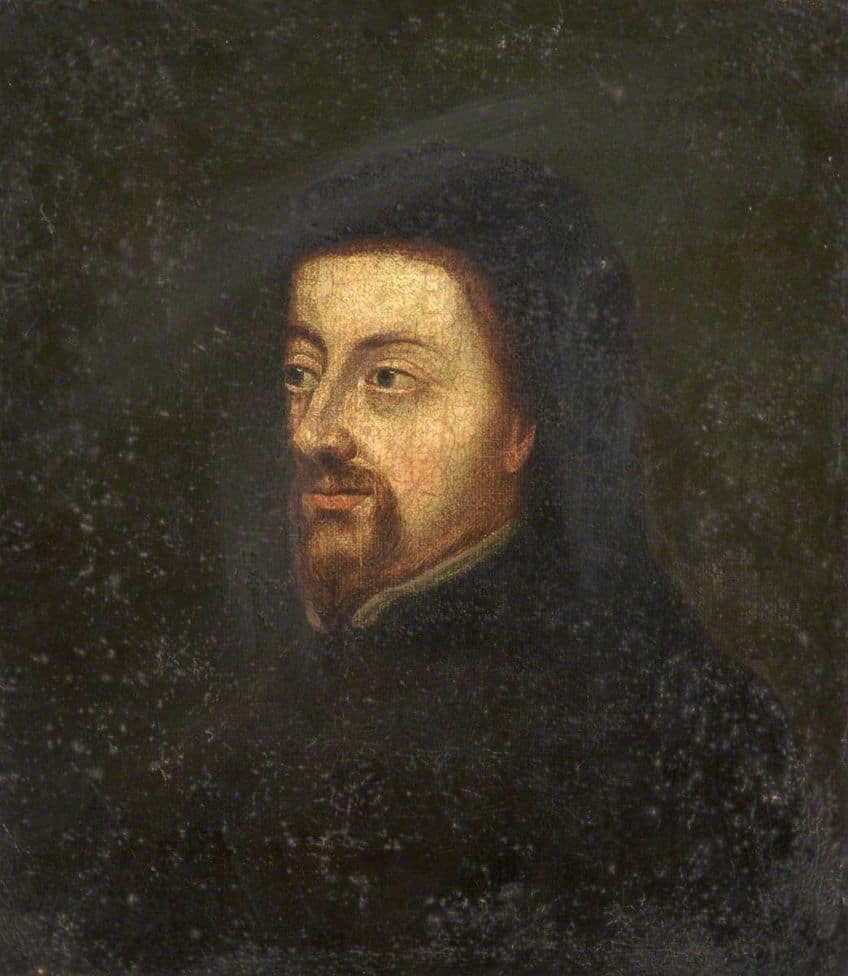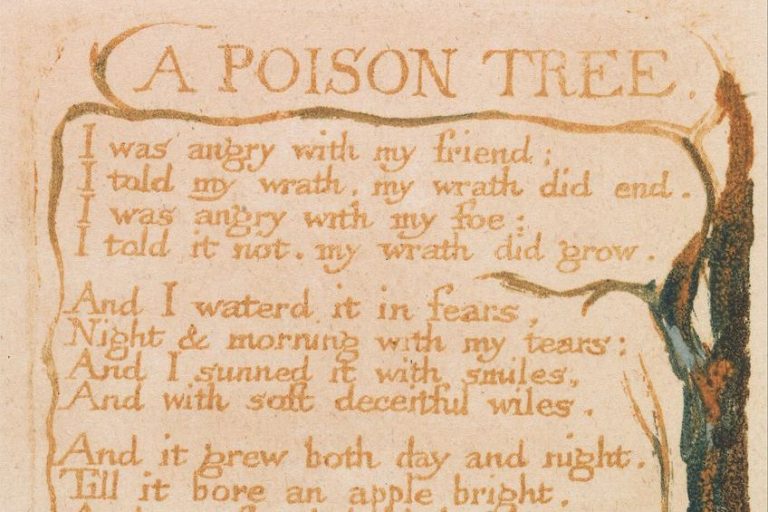What Is a Villanelle Poem? – A Unique French Form of Prose
What is a villanelle poem? What is the villanelle structure? What is the villanelle rhyme scheme? All of these questions will serve as our primary focus for the article below. We will examine the history of this form, the primary characteristics of the villanelle poem, some of the common themes explored by these kinds of poems, and finally, a number of villanelle poem examples. If the villanelle poem is something that is of interest to you, then let’s get started and have a look at the villanelle poem.
Table of Contents
What Is a Villanelle Poem?
The villanelle poem is an interesting one. It has its origins as a French verse form of poetry but has since become far more international and can be used in any language. The primary idea behind the villanelle format is that it makes use of extensive repetition. That repetition comes in the form of the verbatim repeating of certain lines in the poem. This will be explored in more depth in the article below, but it should be noted that this form, while highly repetitious, allows for those repeated sections to be incredibly important and integral to the understanding of the poem as a whole. So, let’s have a look at this form and answer the question: “What is a villanelle poem?”.

The History of the Villanelle Format
The earliest origins of the villanelle format saw it as a French verse form that was focused on pastoral themes. However, this structure, when first developed, was intended for a more musical association and was often accompanied by a dance. It would eventually make its way into the English language in the 19th century, and once it had entered English literature, it became a popular form. The villanelle structure would go on to be one that was favored for its restrictive format, a format that was not actually as restrictive when it was initially developed. The villanelle poem would continue into the 20th century, and it would be used by several prominent poets, a few of whom will be discussed later in this article.
However, let us first discuss the primary characteristics of this strict form of poetry.
The Common Characteristics of the Villanelle Format
The villanelle format is quite a unique thing in the history of poetry. This particular poetic form makes use of a very specific structure and rhyme scheme, and thanks to this particularity, it is not a very common type of poetry. However, the use of repetition has made the villanelle format one of the most recognizable forms of poetry in the world. Let’s examine what sets the villanelle apart from other types of poetry by discussing the villanelle structure and the villanelle rhyme scheme.

The Villanelle Structure
The structure of the villanelle poem is the most notable aspect of this type of poetry. The general idea behind the villanelle is that it makes use of nineteen lines and six stanzas. The specifics of those stanzas will be discussed when examining the villanelle rhyme scheme below, but what we will focus on here is the use of repetition. The structure of each of these stanzas of the poem is focused on the use of two lines that are repeated verbatim. The first and third lines of the first stanza are repeated at the end of each subsequent stanza in an alternating arrangement. The final stanza involves both of those lines repeated once again.
Together, this use of exact repetition is an unusual one in terms of the different types of poetry as such extensive and exact repetition is seldom seen outside of refrains used in more musical examples of poetry.
The Villanelle Rhyme Scheme
While the villanelle poem’s use of repetition in its structure, as discussed above, is generally its most notable feature, the villanelle rhyme scheme is also an important thing. The structure of the villanelle entails the use of nineteen lines, and those lines are broken up into five tercets, or three-line stanzas, and one final quatrain, or four-line stanza. These tercets and quatrain make use of the same repetitious rhyme scheme.

Each tercet makes use of an ABA rhyme scheme while the final quatrain makes use of an ABAA rhyme scheme. This final quatrain essentially retains the rhyme scheme of the tercets while adding on an extra rhyme. This extensive use of the same rhyme makes the villanelle a somewhat difficult poem structure to become accustomed to, but once the style has been mastered, it can be an interesting style to use.
The intense level of repetitious rhyming is aided by the use of the verbatim repeating of two lines. Those two lines will, as they do not change, make use of the same end-rhyme as one another. This does aid in the general villanelle rhyme scheme, but it could also lead one to see it as a lazy example of rhyme.
However, the rhyme scheme of this variety of poetry is not the primary point of focus because that focus is instead on the structure and repetition of lines.
The Common Themes of the Villanelle Format
When it comes to the villanelle format, there are many themes that can be explored. While the original format of the villanelle was more pastoral in tone, and so became concerned with country life, this did not persist into all later examples of the villanelle format. However, the early origins of the villanelle as a way of examining the pastoral lifestyle is an interesting one, but it has not persisted through the years.
Instead, the general form of the villanelle structure has led to its use in a variety of different themes and topics. The use of repetition throughout this type of poetry has ensured that the villanelle has become a useful means of focusing on topics that require some kind of an obsession in their presentation. The exact repetition of lines has allowed the villanelle to become concerned with topics like love or struggle.

However, while the villanelle structure does lend itself to topics that may entail the use of obsession, the form can technically be used for anything. The repetition could also be seen as something related to a refrain or chorus, and this can lead the villanelle to have a more musical general quality to its presentation. This can also mean that a playful and entertaining tone could be used instead of a more solemn one.
However, many villanelle poem examples are about far darker and more serious topics. This, clearly, does not need to be the case, but it does make sense. The use of exact repetition is a means of establishing a thematic throughline that persists throughout the poem that constantly brings it back to the same topic over and over again.
This also means that the villanelle is often a very focused kind of a work because many of the lines are simply the same two lines repeated.
Famous Villanelle Poets
There have been many famous poets who have made use of the villanelle format. These poets did not solely make use of villanelle poems, but they have written some of the most famous villanelle poem examples. However, there are many others who have also made use of this form. Let’s have a look at three of the most famous poets who have made use of the villanelle format.

W. H. Auden (1907 – 1973) from York
| Poetic Movement | Variable |
| Years | 1907 – 1973 |
| Place of Birth | York, United Kingdom |
| Known For | If I Could Tell You (1940) |
H. Auden was an English poet who became a well-known figure during the Great Depression. His work explored a diverse range of themes, such as politics, religion, ethics, and love, and he is also known for his incredibly stylistic writing and technical ability.
He is often considered to be one of the greatest poets of the modern era and an important figure in the development of modern poetry in general.
While he is not solely known for making use of the villanelle structure, he is noted for writing one of the most famous examples of this format. That poem will be discussed below. Many of his poems are noted for their general undercurrent of sadness, and he often used his poetry to address concerns on the political left, such as the rise of dictators and more specific examples like the Spanish Civil War.

Dylan Thomas (1914 – 1953) from Swansea
| Poetic Movement | 20th Century Romanticism |
| Years | 1914 – 1953 |
| Place of Birth | Swansea, Wales |
| Known For | Do Not Go Gentle Into That Good Night (1951) |
Dylan Thomas was a Welsh writer who often made use of lyrical poetry that was imbued with emotionality. However, because of his variability and the immense originality of his work, he cannot easily be classified into any specific movement.
For this reason, the villanelle structure is also not particularly associated with him outside of what is likely his most famous poem, which will be discussed in more detail below.
He also became known for his difficult personal life, and his work was informed by that. Many of the themes that he would go on to explore were concerned with life and death, the loss of innocence, and nostalgia. His work would go on to be immensely influential throughout the modern era, and his influence cannot be understated.

Sylvia Plath (1932 – 1963) from Boston
| Poetic Movement | Confessional poetry |
| Years | 1932 – 1963 |
| Place of Birth | Boston, Massachusetts, United States |
| Known For | Mad Girl’s Love Song (1953) |
Sylvia Plath was a poet who died very young after suffering from mental illness throughout her life. She was an accomplished poet while still in high school and would go on to become well-known for her poetry, and her single novel, The Bell Jar.
Her poetry was often concerned with a more confessional style in which she examined death, mental illness, the natural world, the self, patriarchy, loneliness, and motherhood.
She has become a notable poet in the contemporary era and her work has gone on to be immensely popular and influential. In terms of the villanelle structure, she was not known solely for this particular form. Instead, she wrote in many different types of poem structures, but one of her most famous poems, which will be discussed below, is one of the most famous modern versions of the villanelle form.

Famous Villanelle Poem Examples
Now that we have examined some of the most famous poets to have used the villanelle format, we can have a look at a few famous villanelle poem examples. While the villanelle poem may have originated as a French verse form of poetry, it has since become used in the English language to a fantastic extent.
Some of the following poems are seen as some of the most famous villanelle poem examples of all time. Let’s have a look at them.
If I Could Tell You (1940) by W. H. Auden
| Date Published | 1940 |
| Type of Poem | Villanelle |
| Rhyme Scheme | ABA |
| Meter | Variable |
| Topic | Love and time |
If I Could Tell You is one of the most famous poems by W.H. Auden. The poem makes use of the repetition of the villanelle format to reinforce the ideas of love and dedication which are persistent themes throughout the poem.
The poem opens with an examination of time and our human difficulty with truly coming to terms with the ever-moving progression of time in a linear fashion. However, the poem makes use of this focus on time and even personifies it as a figure who stands against us and does not aid us in our search for meaning and love in this world.
The poem’s more melancholic tone is reinforced through the use of the repeated lines of the villanelle structure.
Do Not Go Gentle Into That Good Night (1951) by Dylan Thomas
| Date Published | 1951 |
| Type of Poem | Villanelle |
| Rhyme Scheme | ABA |
| Meter | Variable |
| Topic | Aging and death |
Do Not Go Gentle Into That Good Night is likely one of the most famous villanelle poem examples. This particular poem has become synonymous with the form and is concerned with death. The poem makes use of the metaphor of death as “that good night”, but the repetitious nature of the poem encourages the reader to not simply accept death but to fight against it for as long as possible.
Death is the end of all things as we know it, and while the poem is directly concerned with death itself, it’s about more than only death. The reason for this is that death does ultimately come for us all, but we should continue to persevere and defy it whenever we can. We should continue to fight for what we want in our lives rather than give in to the fate that we may sometimes feel exists.
The poem ultimately rejects that kind of fate, and instead wants us to live to our fullest.
Mad Girl’s Love Song (1953) by Sylvia Plath
| Date Published | 1953 |
| Type of Poem | Villanelle |
| Rhyme Scheme | ABA |
| Meter | Variable |
| Topic | Heartbreak and mental illness |
Mad Girl’s Love Song is one of the most famous modern villanelle poem examples. This particular poem was written by Sylvia Plath and was written when she was still in university. The general themes of the poem are concerned with mental illness and feelings of heartbreak. The poem uses the theme of mental illness to consider that the loss of love she experienced was something that never actually existed and was simply a figment of her imagination. This kind of topic is powerful and disheartening.
The poem, in general, also makes use of a number of techniques, such as enjambment, alliteration, and anaphora. The villanelle structure also allows it to repetitiously make use of a series of repeated refrains that reinforce the ideas that are being explored within the poem. Some of the reasons that this poem has remained so deeply resonant over the decades is because of Plath’s own struggle with mental illness and her eventual suicide at a young age. This villanelle has remained one of the most stunning examples of this form.
We have now arrived at the end of our look at villanelle poems. This particular structure produces something very specific in a similar sense to other rigid forms, like traditional sonnets or sestinas. This is why we have examined the history of this form, some of the primary characteristics of it, and a few villanelle poem examples. For those who have wondered to themselves, “What is a villanelle poem”, hopefully, this has provided a good overview and discussion of this highly structured form of poetry. There are many stunning examples of villanelle poems, and they are always worth a read.
Frequently Asked Questions
What Is a Villanelle Poem?
A villanelle poem is a French verse form of poetry that makes use of a very specific structure. It has an unchanging rhyme scheme that recurs over its nineteen-line length, and it makes use of a specific type of repetition in which certain lines are repeated in a verbatim manner. This poem may not be as famous a form of poetry as something like the sonnet, but there have been many famous villanelle poem examples over the years that are worth reading.
What Is Unique About the Villanelle Structure?
The most unique thing about the villanelle structure is that it makes use of a specific tercet and quatrain structure alongside repetition. It makes use of five tercets, or three-line stanzas, followed by a final quatrain, or four-line stanza. These stanzas make use of a specific villanelle rhyme scheme, but the truly fascinating thing is that the first and third lines are repeated throughout the poem. They are repeated with no variation between them. This means that many of the lines of this type of poem are the exact same line, but this allows for better emphasis on those specific lines.
What Is the Villanelle Rhyme Scheme?
The villanelle format is made up of nineteen lines comprised of five tercets, or three-line stanzas, and a final quatrain, or four-line stanza. These tercets and the final quatrain make use of the same rhyme scheme. Each tercet makes use of an ABA rhyme scheme, and the final quatrain adds an extra rhyme to make it ABAA. This means that the full rhyme scheme of this poetic form is arranged as ABA ABA ABA ABA ABA ABAA. The repetition of whole lines of poetry adds to the flow of the villanelle format.
What Are Some of the Most Famous Villanelle Poem Examples?
There are many famous villanelle poem examples, and some of the most notable include If I Could Tell You (1940) by W. H. Auden, Do Not Go Gentle Into That Good Night (1951) by Dylan Thomas, and Mad Girl’s Love Song (1953) by Sylvia Plath. However, there are many other famous examples of the villanelle format that are worth reading. The more unusual repetition makes these kinds of poems a fascinating thing to read.
What Is the Purpose of the Repetition in a Villanelle Poem?
The use of repetition in general has many different purposes, but the use of such specified repetition is unusual in poetry. The villanelle format leads to the verbatim repetition of two lines in the poem, and that is why those particular lines need to be very specifically chosen. Those two lines need to have significant poetic weight to them to justify their repetitive usage. The reason for these two lines to be repeated is that they need to be emphasized. They are the bulk of the poem’s message, and their repetition implies their profound importance. It is through those particular lines that a full understanding of the poem can be achieved.
Justin van Huyssteen is a freelance writer, novelist, and academic originally from Cape Town, South Africa. At present, he has a bachelor’s degree in English and literary theory and an honor’s degree in literary theory. He is currently working towards his master’s degree in literary theory with a focus on animal studies, critical theory, and semiotics within literature. As a novelist and freelancer, he often writes under the pen name L.C. Lupus.
Justin’s preferred literary movements include modern and postmodern literature with literary fiction and genre fiction like sci-fi, post-apocalyptic, and horror being of particular interest. His academia extends to his interest in prose and narratology. He enjoys analyzing a variety of mediums through a literary lens, such as graphic novels, film, and video games.
Justin is working for artincontext.org as an author and content writer since 2022. He is responsible for all blog posts about architecture, literature and poetry.
Learn more about Justin van Huyssteen and the Art in Context Team.
Cite this Article
Justin, van Huyssteen, “What Is a Villanelle Poem? – A Unique French Form of Prose.” Art in Context. September 26, 2023. URL: https://artincontext.org/what-is-a-villanelle-poem/
van Huyssteen, J. (2023, 26 September). What Is a Villanelle Poem? – A Unique French Form of Prose. Art in Context. https://artincontext.org/what-is-a-villanelle-poem/
van Huyssteen, Justin. “What Is a Villanelle Poem? – A Unique French Form of Prose.” Art in Context, September 26, 2023. https://artincontext.org/what-is-a-villanelle-poem/.









